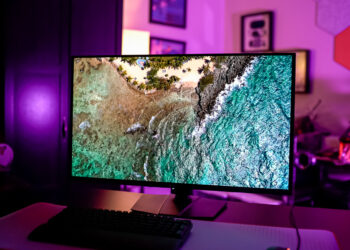Understanding the Role of Monitors in Computing
A monitor is a vital component of any computer system, serving as an output device that displays visual information. While many might associate a monitor solely with the function of showing images or text, its importance in the overall computing experience cannot be overstated. Below, we delve into various aspects of monitors, including their types, functions, and specifications.
Types of Monitors
Monitors come in various types, each suited for different applications and preferences. Here are some of the most common types:
- LCD (Liquid Crystal Display)
- Lightweight and slim design
- Energy-efficient
- Offers good image quality
- LED (Light Emitting Diode)
- A sub-category of LCDs
- Enhanced brightness and color accuracy
- Typically more energy-efficient than traditional LCDs
ADVERTISEMENT - OLED (Organic Light Emitting Diode)
- Superior color representation
- Deep blacks and high contrast ratios
- Flexible designs allow for curved screens
- CRT (Cathode Ray Tube)
- Older technology, mostly replaced by flat-panel displays
- Bulkier and heavier
- Provides excellent color renditions but is less energy-efficient
Key Functions of Monitors
Monitors serve multiple essential functions in a computer system, including:
- Display Visualization
- Rendering graphics, images, and videos
- Presenting text in a readable format
- User Interface Interaction
- Facilitating user interactions with the operating system and software applications
- Supporting touch capabilities in certain models
- Gaming Experience
- Providing high refresh rates and low response times for an optimal gaming experience
- Incorporating technologies such as G-Sync or FreeSync for smoother gameplay
Monitor Specifications
When selecting a monitor, it’s crucial to consider its specifications, which can significantly impact performance. Here are some key specifications to evaluate:
- Resolution
- Determines the clarity of the screen display
- Common resolutions include:
- Full HD (1920 x 1080)
- 4K (3840 x 2160)
- 8K (7680 x 4320)
- Refresh Rate
- Measured in Hertz (Hz); indicates how many times the image is refreshed per second
- Higher refresh rates (e.g., 144Hz, 240Hz) are preferred for gaming
- Aspect Ratio
- The ratio of the width of the display to its height
- Common ratios include 16:9 (widescreen) and 21:9 (ultrawide)
- Response Time
- Indicates how quickly a pixel can change colors
- Lower response times (1ms to 5ms) are ideal for fast-paced gaming
Connectivity Options
Modern monitors offer various connection methods to ensure compatibility with different devices. Some common connectivity options include:
- HDMI (High-Definition Multimedia Interface)
- Transmits both video and audio signals
- Standard for most modern monitors and televisions
- DisplayPort
- Supports high-resolution and high-refresh-rate displays
- Often used for gaming and professional setups
- VGA (Video Graphics Array)
- An older standard, primarily for legacy systems
- Supports lower resolutions compared to HDMI and DisplayPort
- USB-C
- Increasingly popular for new monitors
- Can carry video, audio, and data simultaneously
Additional Features
Monitors often come with additional features that enhance usability and functionality:
- Built-in Speakers
- Some monitors include audio output, eliminating the need for separate speakers
- Adjustability
- Height, tilt, swivel, and pivot adjustments ensure ergonomic use
- Blue Light Filters
- Reduce eye strain during prolonged use
- Anti-glare Coating
- Minimizes reflections from ambient light, improving visibility
Understanding what a monitor is and the various options available allows users to make informed choices whether they are outfitting a home office, engaging in gaming, or delving into graphic design. By focusing on the type, functions, specifications, connectivity options, and additional features, one can select the ideal monitor that meets their specific needs.



